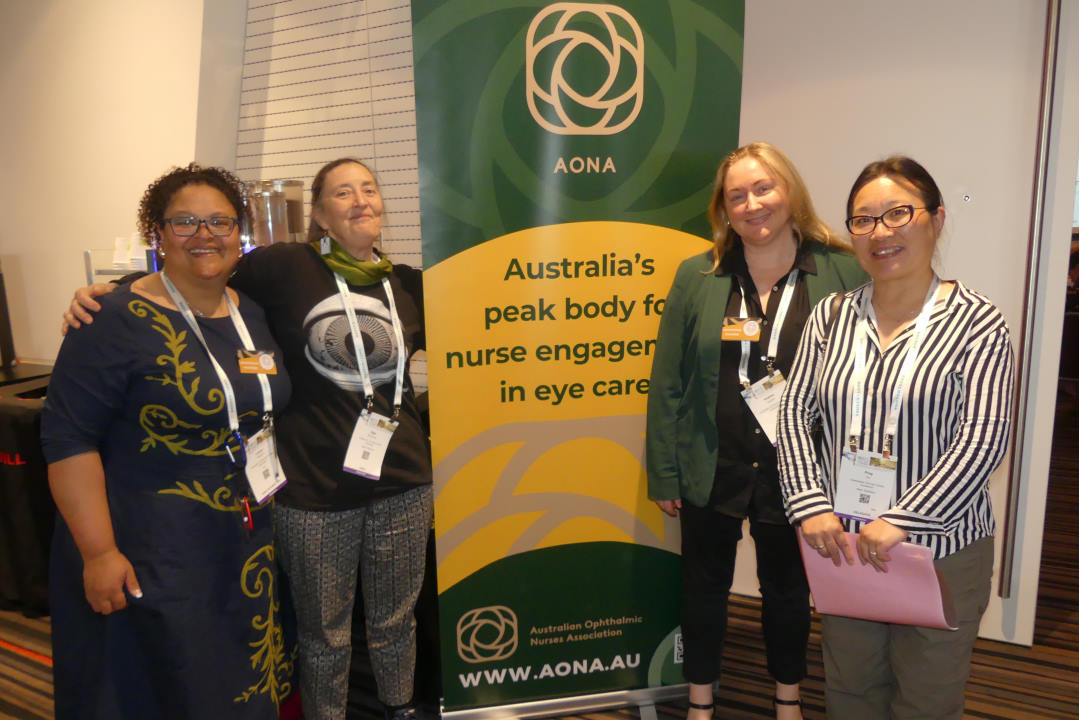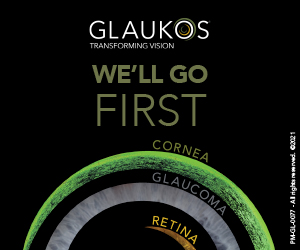RANZCO 2024: Adventures in Adelaide
An exciting and engaging conference programme for the Royal Australian and New Zealand College of Ophthalmology’s (RANZCO’s) 55th Annual Scientific Congress attracted me to take my first journey to Adelaide. Bubbling with anticipation, I was one of the lucky few from New Zealand who managed to wrangle a direct five-hour flight. My first glimpse of the city was acres of lush sprawling vineyards, each green row perfectly symmetrical – an appealing aesthetic for the punctilious aspiring ophthalmologist in me.
Friday’s sessions were mainly workshops targeted at consultants, so after a pleasant day spent exploring Adelaide’s McLaren Vale and Glenelg beach, I found myself hobbling in my heels to RANZCO’s welcome function, celebrating Diwali at the famous Adelaide Oval. Complete with superb Diwali-inspired nibbles and colourful outfits, as many RANZCO attendees embraced the Diwali spirit and celebrated coming together, I knew at this point the conference was going to be excellent.

Drs Louis Han, Pragnya Jagadish, Andrew Thompson, Verona Botha, Francesc March de Ribot and
Madelyne Jouart

Dr Cam Loveridge-Easther and A/Prof Andrea Vincent
A changing future inspiring thought
This year’s congress was held opposite the Oval at the monumental Adelaide Convention Centre, which appeared large enough to fit the entire population of Auckland. Curated by Sydney-based vitreoretinal surgeon Professor Adrian Fung and neuro-ophthalmology and strabismus specialist Associate Professor Clare Fraser, the 55th Congress’ main scientific programme began on Saturday morning after an inspiring and thought-provoking introductory lecture by Tim Jarvis, an environmental scientist, adventurer, author and film-maker. Focusing on his expedition recreating Sir Ernest Shackleton’s epic journey of survival to save his men after the failure of his Imperial Trans-Antarctic Expedition (1914–16) aboard Endurance, Jarvis ended his ‘By endurance we conquer’ talk by asking what the main difference was between his and Shackleton’s expeditions. The answer: Shackleton was trying to save his men from Antarctica; today we’re trying to save Antarctica from man!

Scientific chairs Prof Adrian Fung and A/Prof Clare Fraser opening the 2024 RANZCO Congress
The clinical programme proper began with an equally thought-provoking Dame Ida Mann Memorial Lecture, delivered by Professor Robyn Jamieson, head of the Eye Genetics Research Unit at the Children’s Medical Research Institute, University of Sydney. A profoundly impressive speaker, her talk discussed transformative advances in genomic technologies, vision science and ophthalmology, which together are creating a new future of therapies for patients with previously untreatable eye diseases. The gene therapies she described were incredibly complex, but Prof Jamieson did an outstanding job of explaining these and the positive future for inherited retinal disease, given the potential of gene therapy.

Drs Brian Kent-Smith, Sarah Hull and Oliver Comyn
Specialty updates to corneal transplantation
After the morning break, I was lucky enough to be part of the paediatric ophthalmology imaging update session. Held in the vast main hall, I was the only junior presenting on behalf of Auckland-based paediatric specialist Dr Rasha Altaie. Despite the nerves and having to sit at the long table on stage, and squint out at the crowd through the lights, it was an incredible privilege to present alongside world-renowned paediatric ophthalmology experts such as Professor Elise Héon (Toronto, Canada), Dr Deepa Taranath (Adelaide), Dr Caroline Catt (Sydney) and Dr Susie Luu (Adelaide).
The session began with some amazing orthoptic videos presented by Katie Geering, head orthoptist at the Sydney Children's Hospitals Network, which demonstrated how to get ocular imaging from tiny newborn babies. It was incredible and definitely seemed as though there was some sort of magic involved. My favourite part of the session, however, were the clinical cases presented by Prof Héon. Paediatric pathology is so different from adult pathology and this session really highlighted the importance of excellent retinal imaging for managing conditions such as retinopathy of prematurity (ROP).

Drs Chris Murphy and John Rawstron with Optimed's Craig Norman
The other specialty update lectures focused on cataracts and oculoplastics. The cataract lecture was presented by another Canadian, Professor Rosa Braga-Mele from the University of Toronto. Her talk was very humbling for someone at my level who is just starting to learn the basics of cataract surgery. It seems the more you learn, the more there is to learn!
The oculoplastic update lecture was presented by another international speaker, Dr Raymond Douglas, a renowned aesthetic and reconstructive oculoplastic surgeon based in Beverly Hills, California, who was one of the lead scientists in the development of the only FDA-approved thyroid eye disease (TED) treatment, Tepezza. He was a charismatic speaker who spoke passionately about TED treatment and management, showing some great before and after photographs of his patients post-IGF-1R (Tepezza) treatment.

Drs Arvind Gupta and Benjamin Au
For the last session of the day, I was part of a panel on corneal transplantation led by our own Professor Charles McGhee, chair of ophthalmology at the University of Auckland. As the only New Zealand-led panel at the conference, this was very exciting! We discussed the changing landscape of corneal transplantation in Oceania and the challenges of delivering care to our most vulnerable populations. My favourite talk from this session was given by Professor Gerard Sutton from the University of Sydney, who established the world’s first university course in refractive (laser eye) surgery and has a CV longer than most novels. He’s currently involved in developing an artificial cornea, which will hopefully eliminate the need for eye donation altogether. His team performed a cost analysis on setting up an eye-bank service versus funding development of a lab-based artificial cornea system and found it more cost effective to invent an artificial cornea, which surprised me.

Drs Natalie Allen and Jie Zhang with Prof Charles McGhee
Genetic profiling, retinal imaging and rapid-fire research updates
Day two was a scorching, sunny Sunday. It began with the Sir Norman McAlister Gregg Lecture, delivered by Professor Stuart MacGregor, head of the QIMR Berghofer Statistical Genetics Group in Brisbane. A pioneer in genetics, Prof MacGregor discussed the role genetics and genetic-statistical modelling can play in risk profiling for conditions such as glaucoma. He helped co-develop a polygenic risk score that can ascertain an individual’s risk of inherited ocular disease. This is a really exciting space in ophthalmology and hopefully, during my career, the potential of these statistical genetic models will become fulfilled in clinical practice.
International speaker Professor SriniVas Sadda, director of artificial intelligence and imaging research at the Doheny Eye Institute and ophthalmology professor at the University of California Los Angeles (UCLA) Geffen School of Medicine, delivered this year’s Retina Update Lecture. Prof Sadda is one of those ophthalmologists you spend your whole life citing, so I was a little awestruck seeing him in person. Although he’s published more than 750 papers, he is very down to earth. His lecture focused on recent advances in imaging, which now allow ophthalmologists to gain novel insights into the metabolic composition and functional capabilities of retinal cells. Despite being quite technical, his lecture was very clear and engaging and focused my attention on an exciting and developing area of ophthalmology. Prof Sadda uses different coloured lights to enhance his retinal imaging process to distinguish pathologies before they become visible to the naked eye. It was a bit like science fiction, but the images and photographs really spoke for themselves.

Drs Rachel Barnes and Cecilia Ling
I always love the rapid-fire sessions at ophthalmology conferences because the talks are short and sweet and you get to learn lots of little pearls and hear about the latest research and thinking. It’s also often where some of the more junior members of ophthalmology teams get to speak, so it’s a great place to hear about your counterparts’ work across the ditch. New Zealand was represented by Dr Vince Wilkinson, a junior medical retina fellow at Greenlane Clinical Centre in Auckland, who discussed anterior uveitis recurrence. His takeaway was that about half of all anterior uveitis cases will recur over 10 years. My second favourite talk (Dr Wilkinson’s was number one by default, obviously) was delivered by Dr Cindy Liu from Queensland on the use of bevacizumab (Avastin) in type 1 ROP. Dr Liu and her team found this drug to be a safe and effective treatment for ROP.
Outside the conference hall

DFV’s Gian Victoria with Stiltec’s Steven Mann and Greg Hepple
The sponsor hall is one of my favourite parts of the RANZCO Congress and this year was no exception. A vast, sprawling hall packed to the brim with stands demonstrating everything from the latest OCT technology to diamond scalpels, it was buzzing with colour, chatter and exceptionally well-dressed industry representatives. It is particularly alluring to a junior-ophthalmology wannabe, because the prospect of walking up to an elaborate display and buying an Optos machine seems preposterous and thus all the more exciting. To my delight, the Eylea-sponsored gelato cups returned this year, resulting in a queue of doctors and a central meeting spot for hypoglycaemic ophthalmologists from all corners of Oceania! I spent my breaks collecting complimentary pens, trying out new technologies and wandering through some of the quieter stands. This led me to a very interesting collection of historic ophthalmic instruments from the RANZCO museum collection, which was fascinating and horrifying in equal measure.

Optos CEO Robert Kennedy with Optos ANZ managing director Jason Martone
Another highlight outside the lecture halls, was the wonderful Women in Ophthalmology luncheon, chaired by our own Professor Helen Danesh-Meyer, an Auckland-based international authority on glaucoma and neuro-ophthalmology. The keynote speaker for this year’s lunch was Dr Lisa Brown, who is not only a hepatobiliary and general surgeon at the Royal Melbourne Hospital and Peter MacCallum Cancer Center but also plays a key role in space surgery! Dr Brown shared her incredible story of overcoming adversity and following her passion for space and how she now manages to balance surgical training with NASA space camps and motherhood, all of which was truly extraordinary. She is also on the board of Women in Space Aotearoa, an organisation I will definitely be joining! It’s not often you get to hear from a space surgeon who grew up in small-town New Zealand. The lunch was inspirational with incredible camaraderie, so I hope it continues to be an annual RANZCO tradition.

Dr Justin Mora, Prof Helen Danesh-Meyer and Dr Sarah Welch
Awards, mysteries and more inspiration
The battle for the best paper presentations was run a little like The Hunger Games for academia (without the deaths!). Each candidate took a turn making their speech, then was grilled by the assessing panel. This year it was doubly exciting because New Zealand-based Dr Dineo Mpe, an honorary research fellow at the University of Auckland, was selected to battle it out against some of the best and brightest in Oceania. Dr Mpe’s paper on ‘Risk factors for non-attendance in paediatric patients’ was both novel and interesting. She highlighted some curious findings, such as the parents and caregivers of patients were less likely to take boys to follow-up appointments than girls. The winner of the session, however, was Sydney-based Dr Eamonn Fahy, who presented some follow-up results from the ‘Laser in glaucoma and ocular hypertension trial’ (LiGHT), a multicentre randomised controlled trial that found selective laser trabeculoplasty was better at reducing intraocular pressure in treatment-naïve patients if their presenting pressure was greater than 17mmHg. Below that threshold, eye drops were more effective.

Lumibird’s Kylie Prince, Dr Mark Donaldson and Titan Optical’s Cam Gordon
The day closed with some ‘medical retina mysteries’, which was probably my favourite session of the entire conference. The format included the expert panel members each presenting a crazy medical retina case, then the other panel members arguing about what it was. Though my diagnostic skills are nowhere near good enough yet to decipher the Optos and other modality images, this session was incredibly engaging. There is nothing better than seeing your ophthalmic heroes fighting it out in a public arena. Prof Fung ran this session and watching him questioning Dr Sadda on his choroidal naevus case was awe- inspiring.
The last day of the congress began with the Fred Hollows Lecture. This year it was given by Dr Reeta Gurung, a highly respected cornea specialist, a trainer in Southeast Asia and sub-Saharan Africa and the driving force behind eyecare in Nepal as founder and chief executive of the Tilganga Institute of Ophthalmology. She discussed the challenges of delivering eyecare in a developing nation and her work lowering the cost of cataract and refractive surgery for those who really need it.

NZ Optics’ Lesley Springall and Dr Julia Escardo-Paton modelling the Zeiss Artevo’s 850 3D specs
The meeting’s vitreoretinal (VR) session focused on ‘the good, the bad and the ugly’ where a panel of Australasian VR surgeons presented their gnarliest cases from the past few years. This session was fun for shock value alone. The complex pathology these surgeons choose to stick ports into both inspired me and made me a little scared. My main takeaway from this session was how supportive these surgeons were of each other as they discussed these challenging cases. Watching them offer tips and small bits of advice really reminded me how fantastic it is that we have these conferences to exchange ideas and clinical knowledge.
The last session I attended was the rapid-fire oculoplastic/training session. This included two excellent talks from New Zealand presenters Drs Amy Chen and Jahnvee Solanki, both non-training registrars in Auckland. Dr Chen discussed the role of Botox in dry eye disease, which was both informative and novel, while Dr Solanki shared her take on the Sydney microsurgical course and how it benefits ophthalmologically inclined junior doctors.

Drs Stephen Best, Alok Sharma and Peter Hadden
Overall, this year’s RANZCO congress was a well organised, engaging conference packed full of clinical wisdom and fun. I would highly recommend attending next year’s in Melbourne!
Dr Natalie Allen is a second-year junior ophthalmology registrar and PhD candidate with the Department of Ophthalmology at the University of Auckland.





















